 Pets Wash Up (Stairway Decodables Step 3)
6592551
Pets Wash Up (Stairway Decodables Step 3)
6592551
|
Leanna Koch
|
9780756583439 |
2024 |
Contains images
|
|
 Pets in Bed, Level K
310477
Pets in Bed, Level K
310477
|
Twyla Jackson
Dominic Catalano
|
9780076147847 |
2008 |
NIMAC restricted
Contains images
|
|
 Pets on Parade
1389023
Pets on Parade
1389023
|
Carolyn Keene
Peter Francis
|
9781481458252 |
2016 |
Contains images
|
|
 Petting Gilbert: Gilbert the Pig Set 2
4593665
Petting Gilbert: Gilbert the Pig Set 2
4593665
|
Michèle Dufresne
|
9781603430807 |
2015 |
NIMAC restricted
Contains images
|
|
 PhD Science®, Level 2, Module 2: Science Logbook
5182217
PhD Science®, Level 2, Module 2: Science Logbook
5182217
|
Great Minds
|
9781636427232 |
2022 |
NIMAC restricted
Contains images
|
|
 PhD Science®, Level 2, Module 3: Sky, Science Logbook (PhD Science®)
5220398
PhD Science®, Level 2, Module 3: Sky, Science Logbook (PhD Science®)
5220398
|
Great Minds
|
9781636427249 |
2022 |
NIMAC restricted
Contains images
|
|
 PhD Science™, Level 3, Module 3: Traits, Student Science Pack
3868772
PhD Science™, Level 3, Module 3: Traits, Student Science Pack
3868772
|
Great Minds
|
9781644973035 |
2020 |
NIMAC restricted
Contains images
|
|
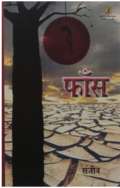 Phans: फांस
3257389
Phans: फांस
3257389
|
Sanjeev
|
9789352290000 |
2019 |
Contains image descriptions
|
Read Now
|
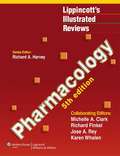 Pharmacology
583689
Pharmacology
583689
|
Richard A. Harvey
Michelle A. Clark
Richard Finkel
Jose A. Rey
Karen Whalen
|
9781451113143 |
2012 |
|
|
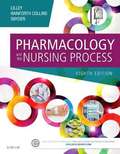 Pharmacology And The Nursing Process
1440338
Pharmacology And The Nursing Process
1440338
|
Linda Lane Lilley
Shelly Rainforth Collins
Julie S. Snyder
|
9780323358286 |
2017 |
|
|
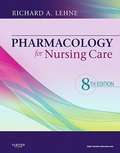 Pharmacology For Nursing Care
978421
Pharmacology For Nursing Care
978421
|
Richard A. Lehne
|
9781437735826 |
2013 |
|
|
 Pharmacology For The EMS Provider (Fifth Edition)
1865139
Pharmacology For The EMS Provider (Fifth Edition)
1865139
|
Richard K. Beck
|
9780803643642 |
2015 |
|
|
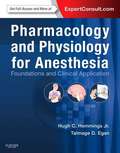 Pharmacology and Physiology for Anesthesia
1082437
Pharmacology and Physiology for Anesthesia
1082437
|
Hugh C. Hemmings
Talmage D. Egan
|
9781437716795 |
2013 |
|
|
 Pharmacology for Nurses: A Pathophysiologic Approach (3rd Edition)
516290
Pharmacology for Nurses: A Pathophysiologic Approach (3rd Edition)
516290
|
Michael Patrick Adams
Leland Norman Holland Jr.
Carol Q. Urban
|
9780135089811 |
2011 |
|
|
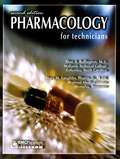 Pharmacology for Technicians (2nd edition)
1622469
Pharmacology for Technicians (2nd edition)
1622469
|
Don A. Ballington
Mary M. Laughlin
|
9780763815271 |
2003 |
|
|
 Pharmacology for Technicians (Second Edition)
2182685
Pharmacology for Technicians (Second Edition)
2182685
|
Don A. Ballington
Mary M. Laughlin
|
9780763815271 |
2003 |
Contains images
|
|
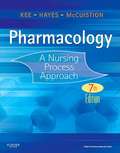 Pharmacology: A Nursing Process Approach (7th Edition)
621652
Pharmacology: A Nursing Process Approach (7th Edition)
621652
|
Joyce Lefever Kee
Evelyn R. Hayes
Linda E. Mccuistion
|
9781437717112 |
2011 |
|
|
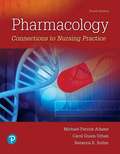 Pharmacology: Connections To Nursing Practice
4126577
Pharmacology: Connections To Nursing Practice
4126577
|
Michael Adams
Carol Urban
Rebecca Sutter
|
9780134867366 |
2019 |
|
|
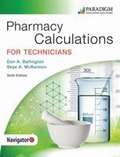 Pharmacy Calculations For Technicians (6th Revised Edition)
2108972
Pharmacy Calculations For Technicians (6th Revised Edition)
2108972
|
Don A. Ballington
Skye A. McKennon
|
9780763868451 |
2017 |
Contains images
|
|
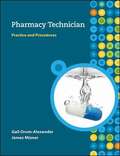 Pharmacy Technician: Practice and Procedures
1228830
Pharmacy Technician: Practice and Procedures
1228830
|
Gail Orum-Alexander
James J. Mizner
|
9780073520728 |
2011 |
|
|
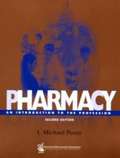 Pharmacy: An Introduction to the Profession
239224
Pharmacy: An Introduction to the Profession
239224
|
L. Michael Posey
|
9781582121277 |
2009 |
|
|
 Phase Change Engineering Internship: Portable Baby Incubators (Article Compilation)
2285069
Phase Change Engineering Internship: Portable Baby Incubators (Article Compilation)
2285069
|
The Lawrence Hall of Science
|
9781642768312 |
2018 |
NIMAC restricted
Contains images
|
|
 Phase Change Engineering Internship: Portable Baby Incubators, Engineering Notebook
4805270
Phase Change Engineering Internship: Portable Baby Incubators, Engineering Notebook
4805270
|
The Lawrence Hall of Science
|
9781640895553 |
2018 |
NIMAC restricted
Contains images
|
|
 Phase Change Engineering Internship: Portable Baby Incubators, Engineering Notebook, with Article Compilation
4805249
Phase Change Engineering Internship: Portable Baby Incubators, Engineering Notebook, with Article Compilation
4805249
|
The Lawrence Hall of Science
|
9781947002890 |
2018 |
NIMAC restricted
Contains images
|
|
 Phase Change: Titan’s Disappearing Lakes (Article Compilation)
2285062
Phase Change: Titan’s Disappearing Lakes (Article Compilation)
2285062
|
The Lawrence Hall of Science
|
9781642768305 |
2018 |
NIMAC restricted
Contains images
|
|